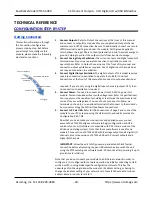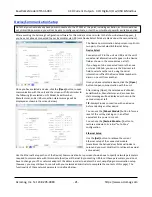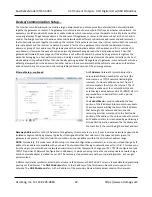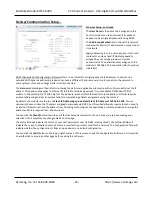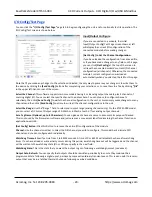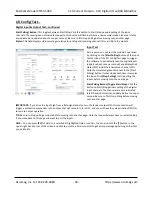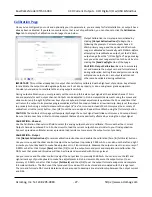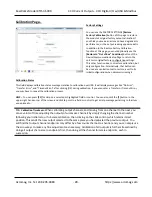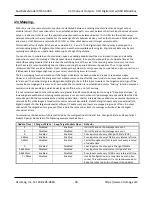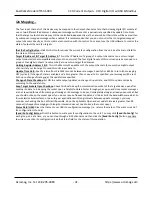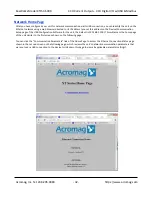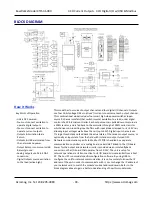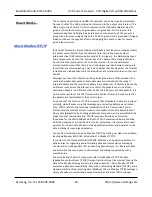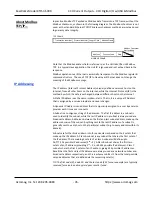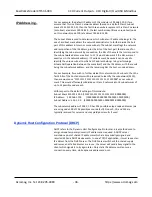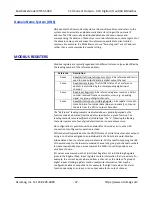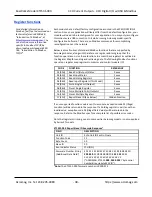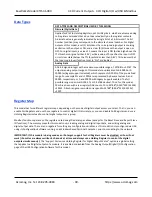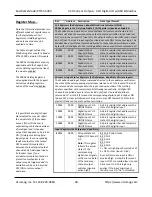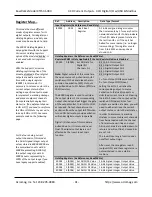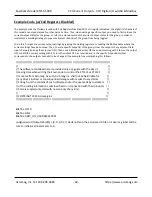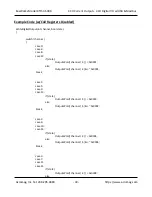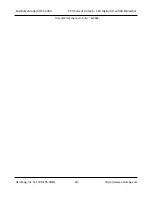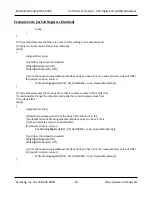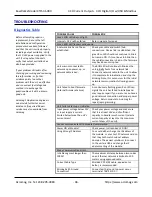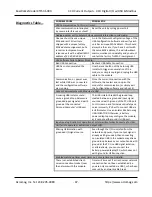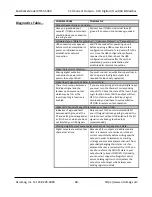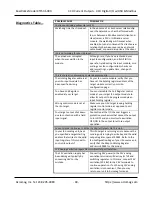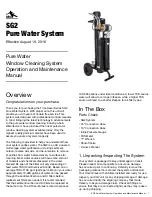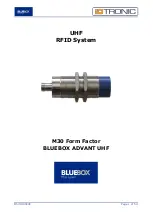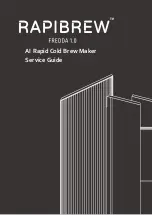
BusWorks Model XT1531‐000
4 CH Current 4 CH Digital I/O w/USB & Modbus
Acromag, Inc. Tel: 248‐295‐0880
‐
34
‐
How it
Works…
The outputs and excitation and USB, the network, and power circuits are isolated
from each other. The USB port ground is common to the output circuit return. The
USB port ground of most PC’s is also common to the USB cable shield and earth
ground. I/O could otherwise be grounded or ungrounded. For this reason, it is
recommended that USB signals be isolated when connected to a PC to prevent a
ground loop from occurring between the PC earth ground and a grounded I/O signal,
which could have the negative effect of driving digital upset or noise for severe
ground loop currents.
About Modbus TCP/IP
IP (Internet Protocol) is the method by which data is sent from one computer (host)
to another computer (host) on the network (Internet). In the Open Systems
Interconnection (OSI) communication model, IP is in layer 3, the Networking Layer.
Every computer or host on the Internet has an IP address that uniquely defines it
from all the other computers or hosts on the Internet. IP is a connectionless
protocol, which means that there is no continuing connection between end points
(hosts) that are communicating. That is, each packet that travels across the Internet
is treated as an independent unit of data without any relationship to any other unit
of data.
Messages sent over the internet can be quite lengthy and are often divided into a
number of smaller data packets. Every data packet
contains both the sender’s
Internet address and the receiver’s address. Each packet can, if necessary be sent by
a different route across the Internet. As a result, the packets can arrive at their
destination address in a different order. While the IP delivers the data packets, it is
up to another protocol, the TCP (Transmission Control Protocol) to make sure that
the packets are reassembled in the correct order.
So we see that the function of TCP is to ensure that all packets of data are received
correctly, while IP makes sure that messages are correctly addressed and routed.
Thus, TCP/IP refers to the functional combination of the Transmission Control
Protocol and the Internet Protocol used to accomplish this and it allows blocks of
binary data (packets) to be exchanged between computers, and reassembled in the
proper order at their destination. TCP/IP is used world‐wide and forms the
foundation for the World Wide Web. But the TCP/IP combination does not define
what the data means or how the data is to be interpreted, it is merely a
transport
protocol
. For this module, Modbus is the
application protocol
and operates on the
data, defining its meaning and purpose.
You can find more information on Modbus TCP/IP by visiting our web site and down‐
loading whitepa
per 8500‐765, Introduction To Modbus TCP/IP.
In contrast to the Transport Protocol TCP/IP, Modbus is an
application protocol
. It
defines rules for organizing and interpreting data and is essentially a messaging
structure that is independent of the underlying physical layer. It is freely available
and accessible to anyone, easy to understand, and widely supported by many
manufacturers.
The combination of both of these protocols forms Modbus TCP/IP. Modbus
(application protocol) uses TCP/IP (transport protocol) over the Internet to carry the
data of the Modbus message structure between devices. That is, Modbus TCP/IP
combines a physical network (Ethernet), with a networking standard (TCP/IP), and a
standard method of representing data (Modbus). Then, a Modbus TCP/IP message is
simply a Modbus communication encapsulated in an Ethernet TCP/IP wrapper.

